Straw bale, strohballen, strobaal: reflections on the European Straw Bale Gathering 2019
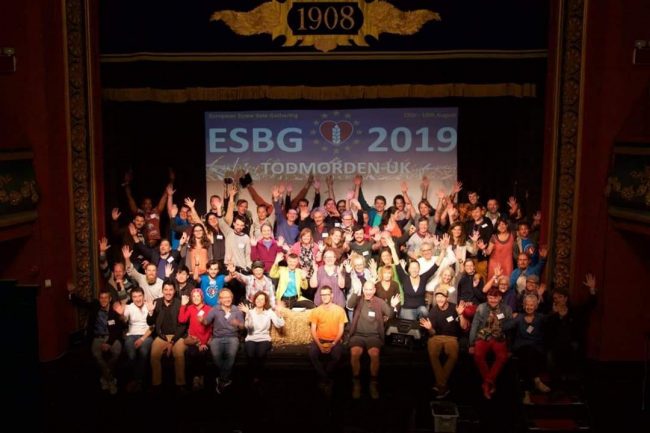
Hosted by the UK for the first time last month, Lowimpact.org’s Sophie Paterson shares her reflections on the European Straw Bale Gathering 2019.
It rained and it poured, but the good old British weather couldn’t dampen spirits as Todmorden played host to over 200 straw-bale building practitioners and enthusiasts from across Europe in August. A biennial event from ESBA, it this year formed part of the UPSTRAW project funded by Interreg North West, with a focus on straw-bale construction for urban and public buildings across north-west Europe.
Early arrivals were treated to tours of local buildings built using straw – including a classroom, library extension, community centre and business park – which set the scene for the three days of presentations, workshops and networking to follow.
Straw bale, strohballen, strobaal…
It was clear from the programme that straw-bale building is reaching new heights across Europe, with classrooms in France, an accommodation block at the Plantsketten Benedictine Abbey in Germany and a retro-fit wrapping of a Dutch sports centre among five construction projects receiving funding through the UPSTRAW project.
Procurement: problems and possibilities
That said, public procurement is proving a challenge common to all European partners. The opportunity to hear the perspectives of UK local authority representatives from Hastings Borough Council and Calderdale Metropolitan Borough Council was therefore very welcome. Whilst there is much still to learn, the further development of and openness to collaborative consortium-based bids going forward offers significant cause for hope moving forward. The Interreg-funded construction of a new visitor centre currently underway at Hastings Country Park is one of hopefully many more initiatives to follow.
Building communities
A particular highlight for me was the focus on straw-bale construction in a community context, which took centre stage on the second day. We heard from Glynis Kirkwood-Warren of Lordship Hub in Tottenham, where a straw-bale community cafe provides a haven for a host of community activities. Vicar Richard Dormandy, meanwhile, provided an update on the inspiring progress made by his congregation constructing a much-needed community hub at Holy Trinity Church in Tulse Hill: you can watch the video below to learn more about their incredible project.
A post-lunch session with Kala Wild of Calder Valley Community Land Trust provided much food for thought as to the real need for the natural building community to work in ever greater collaboration with CLTs and the wider community-led housing sector. It was also a reminder that, despite much goodwill, one major barrier all too often stands in the way: access to affordable land.
Chance to get stuck in
Away from the talks themselves, a varied programme of workshops on each of the days provided the opportunity to get hands on. Hawkland Ecological Construction demonstrated timber-framing techniques and there was chance to see EcoCocon’s pre-fab panels in action with Bjorn Kierulf.
It was by no means all straw, however: clay was firmly on the menu too, with Simone Ruschmeier demonstrating its many magical properties in her session, whilst Rae Parkinson of Straw Works shared her expertise in a plastering workshop. Sadly, a fire test demonstration that had been planned was cancelled – but if in any doubt as to the fire-resistance capabilities of straw-bale walls, look no further than here. The video below of a fire test conducted on a pre-fabricated straw-bale wall panel is also worth a watch!
Differing directions
So what did I take away from a jam-packed three days?
Something which has resonated particularly strongly with me following the event has been the sense of new directions developing within the straw-bale building community. Whilst all are united in their passion for so versatile and accessible a building material, I sensed the emergence of two distinct approaches.
The first focuses on the use of natural materials as extensively as possible, sourced as locally as possible to site, and implementing low-tech sustainable solutions to issues such as ventilation, principles encapsulated beautifully in a presentation by Sandy Halliday of Gaia Group and a video by Canadian natural builder Chris Magwood. This approach lends itself well to affordable, low-impact self-build and community projects, and often appears to embrace ways of working which are more co-operatively-minded, and less so for-personal-profit.

The second, meanwhile, places greater emphasis on pre-fabrication and mechanisation at scale, in the form of panels designed for modular construction. This lends itself particularly well to larger public or commercial projects with tight deadlines and also as a quick and easy self-build solution. There also appears to be a tendency to focus on achieving PassivHaus standards and the subsequent mechanical heat ventilation recovery systems entailed. Generally speaking, there appears to be a greater emphasis on rapid growth and franchising, perhaps epitomised most clearly in the rise of EcoCocon, who claim they are “revolutionising eco-building for the 21st century”.
Whilst space exists for both approaches and, no doubt, more besides right now, as pre-fab panel companies continue to grow at pace, I hope that the latter approach will not serve to dwarf the former. For me, some of the magic of straw-bale building would risk being lost if so.
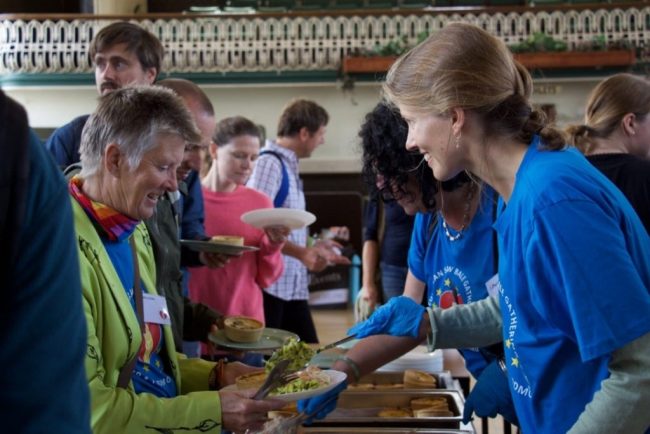
Todmorden: kindness encapsulated
Questions of diverging approaches aside, shining loud and clear throughout the entire event was Todmorden’s overwhelming spirit of kindness. From the smiles of volunteers staffing the beautiful Hippodrome to the opening up of a local church overnight for water-logged campers, the good folks of Todmorden showed just why it was the seedbed for the Incredible Edible movement.
On a personal note, the setting of Todmorden could not have been more apt, with a great deal of my own learning having taken place there as a graduate of The School of Natural Building. It was a joy to share in the culmination of many months of work by event organisers Barbara Jones and Eileen Sutherland, whose delight in hosting on home turf was infectious. Together with their team of volunteers, the event was in excellent hands and my thanks go to them all for a sterling effort.
Where to next?
With ESBG 2019 behind us, the question remains as to where the next gathering will take place. Will it be Spain, Slovakia, Germany? We’ll keep you posted! In the meantime, you can find all the presentations from ESBG 2019 here.
Images sourced with thanks to SBUK.
 About the author
About the author
Sophie Paterson is a co-director at Lowimpact.org and NonCorporate.org, where she looks after promotion, social media, the blogs and more. An aspiring self-builder and graduate of the School of Natural Building, she lives in Totnes, Devon.
The views expressed in our blog are those of the author and not necessarily lowimpact.org's




 SBUK – A new voice for strawbale building in the UK
SBUK – A new voice for strawbale building in the UK
 The European Straw Bale Gathering is coming to Yorkshire for 2019
The European Straw Bale Gathering is coming to Yorkshire for 2019
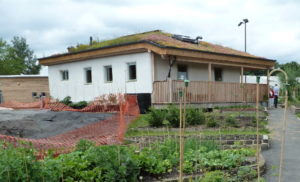 Want to learn about straw-bale building? More news on the ESBG 2019
Want to learn about straw-bale building? More news on the ESBG 2019
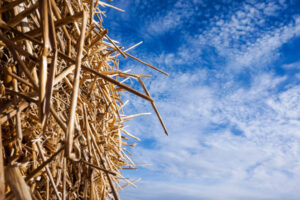 Review: A Complete Guide to Straw Bale Building by Rikki Nitzkin and Maren Termens
Review: A Complete Guide to Straw Bale Building by Rikki Nitzkin and Maren Termens
 Low-impact building
Low-impact building
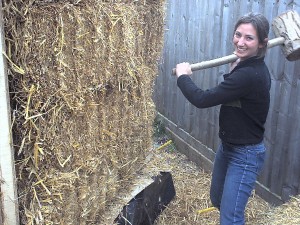 Straw-bale building
Straw-bale building


